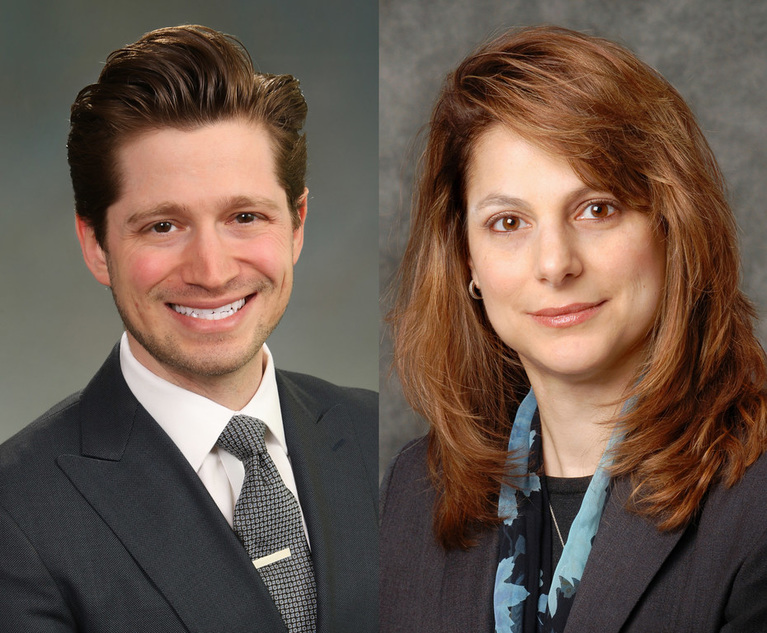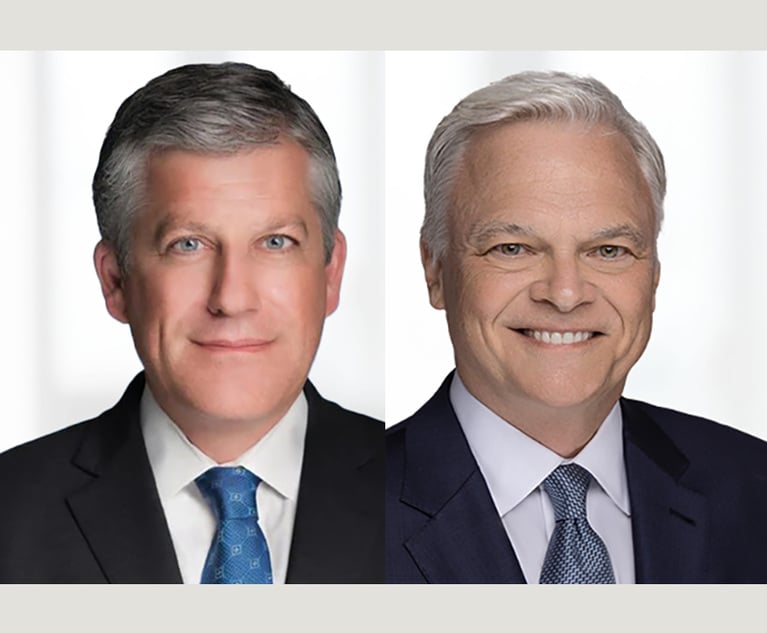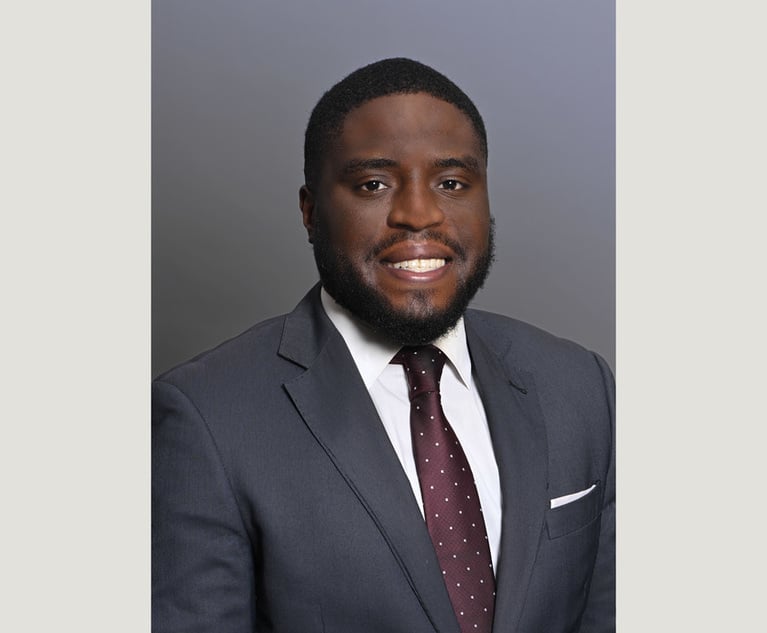'Andy Warhol Foundation v. Goldsmith': A Myopic View of Fair 'Use'
We summarize key elements of the majority's reasoning, highlighting some of the analytical conundrums and open questions it leaves behind.
June 14, 2023 at 11:21 AM
10 minute read
 (L-R)Andrew Costa(L) and Nicole D. Galli(R) of ND Galli Law. Courtesy photos
(L-R)Andrew Costa(L) and Nicole D. Galli(R) of ND Galli Law. Courtesy photos
Introduction
Many (including us) were waiting with bated breath for the U.S. Supreme Court's opinion deciding whether Andy Warhol Foundation's (AWF) licensing of Warhol's iconic "Orange Prince" was a fair use of Lynn Goldsmith's source photo (spoiler alert—it was not). Many (including us) had expected the court to use this opportunity to clarify the transformative fair use defense to copyright infringement under 17 U.S.C. Section 107—or, in other words, clarify the degree of "new expression, meaning or message" necessary for an unauthorized use of a copyrighted work to qualify as fair use. Certainly the disagreement between the lower and appellate court opinions made it seem likely that the Supreme Court would attempt to reconcile these competing analyses into a more coherent rule.
As so often happens with long-awaited Supreme Court rulings, especially in intellectual property cases, we were disappointed. Instead of answering these thorny questions, the court took a different approach focusing, not on Warhol's original use of Goldsmith's photo in creating Orange Prince, but rather on the specific challenged use of the AWF's licensing of the work to Condé Nast in 2016. The result is an 87-page opinion (technically, multiple opinions—a majority, a concurrence and a vehement dissent) that is both enigmatic, narrow, and highly fact dependent. Its future application is anything but clear and clarification of the parameters of transformative fair use is left open for another day.
In our December article, we discussed the factual and procedural history of the dispute and provided highlights from the Oct. 12, 2022, oral argument before the Supreme Court. Here, we summarize key elements of the majority's reasoning, highlighting some of the analytical conundrums and open questions it leaves behind.
This content has been archived. It is available through our partners, LexisNexis® and Bloomberg Law.
To view this content, please continue to their sites.
Not a Lexis Subscriber?
Subscribe Now
Not a Bloomberg Law Subscriber?
Subscribe Now
NOT FOR REPRINT
© 2025 ALM Global, LLC, All Rights Reserved. Request academic re-use from www.copyright.com. All other uses, submit a request to [email protected]. For more information visit Asset & Logo Licensing.
You Might Like
View All
'Taking the Best' of Both Firms, Ballard Spahr and Lane Powell Officially Merge
6 minute read

Trending Stories
- 1Uber Files RICO Suit Against Plaintiff-Side Firms Alleging Fraudulent Injury Claims
- 2The Law Firm Disrupted: Scrutinizing the Elephant More Than the Mouse
- 3Inherent Diminished Value Damages Unavailable to 3rd-Party Claimants, Court Says
- 4Pa. Defense Firm Sued by Client Over Ex-Eagles Player's $43.5M Med Mal Win
- 5Losses Mount at Morris Manning, but Departing Ex-Chair Stays Bullish About His Old Firm's Future
Who Got The Work
J. Brugh Lower of Gibbons has entered an appearance for industrial equipment supplier Devco Corporation in a pending trademark infringement lawsuit. The suit, accusing the defendant of selling knock-off Graco products, was filed Dec. 18 in New Jersey District Court by Rivkin Radler on behalf of Graco Inc. and Graco Minnesota. The case, assigned to U.S. District Judge Zahid N. Quraishi, is 3:24-cv-11294, Graco Inc. et al v. Devco Corporation.
Who Got The Work
Rebecca Maller-Stein and Kent A. Yalowitz of Arnold & Porter Kaye Scholer have entered their appearances for Hanaco Venture Capital and its executives, Lior Prosor and David Frankel, in a pending securities lawsuit. The action, filed on Dec. 24 in New York Southern District Court by Zell, Aron & Co. on behalf of Goldeneye Advisors, accuses the defendants of negligently and fraudulently managing the plaintiff's $1 million investment. The case, assigned to U.S. District Judge Vernon S. Broderick, is 1:24-cv-09918, Goldeneye Advisors, LLC v. Hanaco Venture Capital, Ltd. et al.
Who Got The Work
Attorneys from A&O Shearman has stepped in as defense counsel for Toronto-Dominion Bank and other defendants in a pending securities class action. The suit, filed Dec. 11 in New York Southern District Court by Bleichmar Fonti & Auld, accuses the defendants of concealing the bank's 'pervasive' deficiencies in regards to its compliance with the Bank Secrecy Act and the quality of its anti-money laundering controls. The case, assigned to U.S. District Judge Arun Subramanian, is 1:24-cv-09445, Gonzalez v. The Toronto-Dominion Bank et al.
Who Got The Work
Crown Castle International, a Pennsylvania company providing shared communications infrastructure, has turned to Luke D. Wolf of Gordon Rees Scully Mansukhani to fend off a pending breach-of-contract lawsuit. The court action, filed Nov. 25 in Michigan Eastern District Court by Hooper Hathaway PC on behalf of The Town Residences LLC, accuses Crown Castle of failing to transfer approximately $30,000 in utility payments from T-Mobile in breach of a roof-top lease and assignment agreement. The case, assigned to U.S. District Judge Susan K. Declercq, is 2:24-cv-13131, The Town Residences LLC v. T-Mobile US, Inc. et al.
Who Got The Work
Wilfred P. Coronato and Daniel M. Schwartz of McCarter & English have stepped in as defense counsel to Electrolux Home Products Inc. in a pending product liability lawsuit. The court action, filed Nov. 26 in New York Eastern District Court by Poulos Lopiccolo PC and Nagel Rice LLP on behalf of David Stern, alleges that the defendant's refrigerators’ drawers and shelving repeatedly break and fall apart within months after purchase. The case, assigned to U.S. District Judge Joan M. Azrack, is 2:24-cv-08204, Stern v. Electrolux Home Products, Inc.
Featured Firms
Law Offices of Gary Martin Hays & Associates, P.C.
(470) 294-1674
Law Offices of Mark E. Salomone
(857) 444-6468
Smith & Hassler
(713) 739-1250






